Gimmick blogs are popular, right? Send me an ask or a submission and I'll tell you what the spacecraft is, or answer other spaceflight questions for you
Don't wanna be here? Send us removal request.
Text



February 12, 1961 — Venera 1 launches to Venus
The Soviet Venera 1 was the first interplanetary spacecraft and the first spacecraft to fly by Venus. The first attempt to reach Venus, commonly called Sputnik 7, failed to leave Earth orbit the week prior. Venera 1 passed within 62,000 miles (100,000 km) of Venus in May but returned no data since contact with Earth had been lost only one week after launch.
#Venera 1#already identified#I just think she's neat#it's a shame she couldn't transmit any data#but she still gets the title of being the first human-made object to fly by Venus
30 notes
·
View notes
Photo

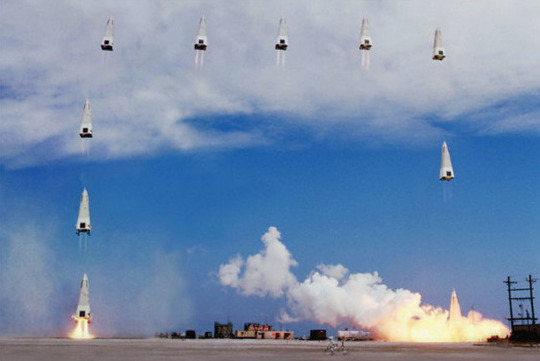
August 18, 1993: The Delta Clipper Experimental (DC-X) launches and lands for the first time.
The McDonnell Douglas DC-X was an uncrewed prototype of a reusable single-stage-to-orbit vertical take-off and landing launch vehicle developed in conjunction with the Department of Defense. The 40-foot-tall pyramid-shaped craft was built using commercial off-the-shelf parts and ran almost autonomously (former Apollo astronaut Pete Conrad was at the controls for some flights). Its successful test flight in August of 1993 made it the first rocket to land vertically on Earth, a feat now being done by SpaceX and Blue Origin every few weeks.
Read more about the Delta Clipper vehicle here!
132 notes
·
View notes
Text
The Chandra X-Ray Observatory, after deployment on STS-93.
#already identified#it's Chandra!#you don't see her on here that often so I thought I'd take the opportunity to give my girl some love#she's 25 this year!#Chandra is often overlooked as the visible light telescopes tend to get all the attention#but she's produced some gorgeous x-ray imagery that's definitely worthy of putting on a space calendar alongside the usual Hubble pics#of course it's all false colour - humans can't see x-rays so there's some artistic license in converting it to colours we can see#but I still think it's wonderful we have telescopes like Chandra that give us a shrimp's eye view of the universe
51 notes
·
View notes
Note
Do you get repeat offenders to the point its overbearing? ie the Saturn V, Voyager, Hubble etc?
And whats your favorite spacecraft? I like the voyager probes, just launch a lil guy with some sensors into space and hope for the best
The Saturn V and Space Shuttle come up the most, but I wouldn't say it's overbearing - honestly, most of the pictures of spacecraft I find on tumblr are already captioned! (People have been doing my job for me!) The Voyagers and Hubble don't appear as often as you might think - there's loads of images taken by them, but relatively few of them
I also think the Voyagers are great, and it makes me so happy that even after all these years and all that distance, we can still communicate with them! Truly, they're the Little Probes That Could ❤️ My favourite spacecraft is probably the Boeing X-20 Dyna-Soar, just for the name alone! (even though it tragically never flew)
6 notes
·
View notes
Text
NASA Saturn V rocket with Apollo CSM

#shdhjdhdjd#there have been several attempts at a single-stage-to-orbit (SSTO) rocket#but it's just not as efficient as having a staged rocket#or even a 'stage-and-a-half' design like Atlas#they have no useful payload#the margins are too tight#they can just about manage to lift themselves into orbit and nothing else#the first stage of a Falcon 9 could probably get to orbit on it's own#without an upper stage or payload or the landing legs and grid fins#but like what would be the point??#NASA#Saturn V#SSTO
32K notes
·
View notes
Text
NASA Rockwell Space Shuttle OV-101 Enterprise

#Enterprise depicted here as she was used for testing the launch pad and ground equipment#You can tell it's Enterprise by the lack of black heat shield tiles in the places the later orbiters had them#Also the external fuel tank is painted white#They only did that during testing and for the first few flights of the space shuttle#Most space shuttle flights left the tank unpainted to save weight#leaving it the distinctive orange colour of the spay-on insulation foam#NASA#Space Shuttle#Enterprise
67 notes
·
View notes
Text
ESA Airbus Jupiter Icy Moons Explorer (JUICE)
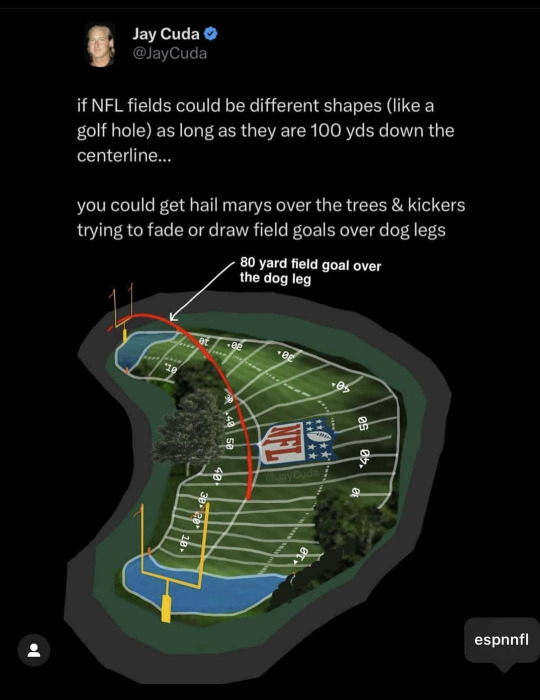
gonna fuck around and make the NFL watchable
#if you haven't read 17776 yet#this is your sign#you will cry about spacecraft#and football#and a lightbulb#ESA#Airbus#JUICE
48K notes
·
View notes
Text
Boeing/North American Aviation/Douglas Aircraft Saturn V rocket
North American Aviation Apollo Block II CSM
🌟Jeff Satur outfit of the year 2023🌟
ROUND THREE: SEMI-FINALS!!
The winners of the round two category finals are:
Promo Event: Komchadluek Awards 19

Music Video: Dum Dum (outfit 1)

Magazine: Harper Bazaar Singapore April

Concert: Siam Halloween

These are your chosen fits. They will now be pitted against each other to see who will make it to the finals.
Semi-final poll 1 - Concert (32.4%) VS Music Video (28.5%)
Semi-final poll 2 - Promo Event (27.8) VS Magazine (26.6%)
Polls are now open for 24 hours!!
#the model doesn't depict any particular Saturn V#it has the additional ullage motors of the early designs#but the white square on the guidance computer of the later designs#also like many models of the Saturn V it erroneously omits the batting on the engines#the batting was themal protection added to prevent the heat from the engines from melting eachother#the model leaves the engines bare#NASA#Apollo#Saturn V
72 notes
·
View notes
Text
The Golden Records, by Carl Sagan et al., 1977
Onboard NASA JPL deep space probes Voyager 1 and Voyager 2
what you don’t get is science exists because people can love. medicine exists because people love each other enough to want each other to live long healthy lives. astronomy exists because someone loved the stars and the planets enough to track them through their ever changing position in the darkest night. science exists because humans are curious little creatures and we want to know the world around us and understand it like it does us. we know stars and planets worlds away, we’ve sent cameras worlds away, all because we love the universe, and we also put love in those satellites!! we sent the sound of a 100 languages, lovely messages, the sound of rain and a laugh, all out there just in case there’s someone in the universe looking for us like we do them, and so that they know that they were never alone, and we sent them the most simple loving things we could find.
science exists because people can love
#NASA#JPL#Voyager 1#Voyager 2#Carl Sagan#Carl wanted to include 'Here Comes The Sun' by The Beatles#But the record label EMI wouldn't let him#Humans are so full of love#Except the ones who worked at EMI
35K notes
·
View notes
Text
NASA Hubble Space Telescope (as originally designed, prior to servicing missions)

62 notes
·
View notes
Text

"KENNEDY SPACE CENTER, FLA. -- Aboard a transporter, the orbiter Columbia moves past the Boeing 747 Shuttle Carrier Aircraft (SCA) at the Shuttle Landing Facility. There the orbiter will be mated to the SCA, with the help of a Mate-Demate Device, for a ferry flight to Palmdale, Calif. On the rear of the orbiter is the tail cone, a fairing that is installed over the aft fuselage of the orbiter to decrease aerodynamic drag and buffet when the Shuttle Carrier Aircraft is transporting the orbiter cross-country. It is 36 feet long, 25 feet wide, and 22 feet high. Columbia, the oldest of four orbiters in NASA's fleet, will undergo extensive inspections and modifications in Boeing's Orbiter Assembly Facility during a nine-month orbiter maintenance down period (OMDP), the second in its history. Orbiters are periodically removed from flight operations for an OMDP. Columbia's first was in 1994. Along with more than 100 modifications on the vehicle, Columbia will be the second orbiter to be outfitted with the multifunctional electronic display system, or 'glass cockpit.' Columbia is expected to return to KSC in July 2000."
Date: September 24, 1999
NASA ID: KSC-99PP-1139
66 notes
·
View notes
Text
The EVA of Astronaut James Irwin by Pierre Mion, 1971
North American Aviation Apollo 15 CSM Endeavour

#This painting depicts the first deep-space spacewalk#Jim Irwin is exiting the CSM to retrieve camera film and other experiments carried on the outside of the spacecraft#in his visor you can see the reflection of Al Worden who joined him on the spacewalk#Apollo#CSM#Jim Irwin#Al Worden#Pierre Mion#NASA#Space#Art
204 notes
·
View notes
Text
Ack! You got me!

363 notes
·
View notes
Text
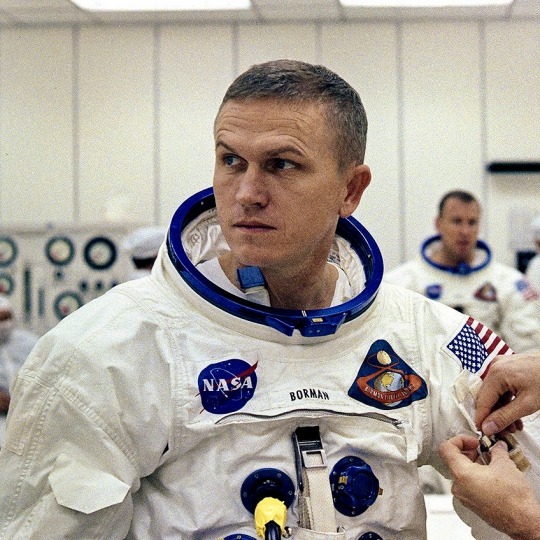
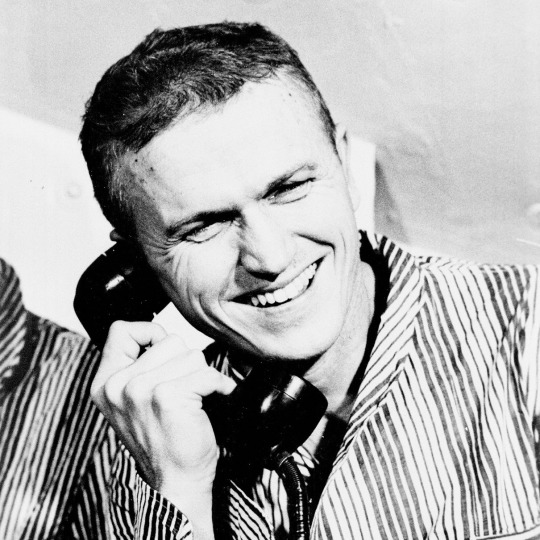



Remember Col. Frank Frederick Borman II (March 14, 1928 – November 7, 2023), who passed away earlier this week at the incredible age of 95.
What an incredible life he had. Frank was the commander of Gemini VII and Apollo 8 and one of the first humans to fly around the moon. Until his death, he was the oldest living American astronaut—now his best friend Jim Lovell, who is 11 days younger, holds the distinction.
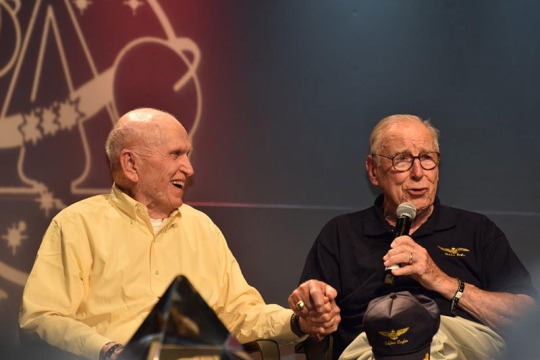
Frank’s beloved wife Susan, to whom he was married for over 70 years, passed away in 2021 and they are survived by their two sons.


Frank will be remembered as one of NASA’s best and brightest. He was known to be direct and to-the-point with a sharp sense of humor to match.
Every December 24th, I listen to Apollo 8’s Christmas Eve broadcast from lunar orbit in 1968, which included the crew’s recitation from Genesis and Frank’s message to the world: “Good night, good luck, a Merry Christmas —and God bless all of you, all of you on the good Earth.” I’ll do so again this year with a little sadness and a lot of gratitude to Frank and his extraordinary life.
"When you're finally up at the moon looking back on earth, all those differences and nationalistic traits are pretty well going to blend, and you're going to get a concept that maybe this really is one world and why the hell can't we learn to live together like decent people." Frank Borman (1928-2023)
#rest in peace frank#the photo of him in the capsule is the Apollo 8 CSM-103#they wanted to name it 'Columbiad' after the spaceship in Jules Verne's novel#but NASA wouldn't let them at the time#there's a lovely episode of 'From the Earth to the Moon' about the mission#that whole series was great tbh#Frank was one of the greats and he'll be missed#Frank Borman#NASA#Apollo#Gemini
389 notes
·
View notes
Text
Bell GAM-63 RASCAL Missile
Bell X-1 Prototype Rocketplane

#A Bell X-1 No. 46-062 named 'Glamorous Glennis' was the first aircraft to break the sound barrier in level flight#It notably had one of the first reliable throttleable rocket engines - the Reaction Motors XLR-11#The XLR-11 had four thrust chambers which could be activated individually#Allowing for 25% 50% 75% or 100% power depending on how many chambers were active simultaneously#This method of throttling isn't used in modern rockets#Instead the amount of fuel and/or oxidiser being fed to the engine is varied#Allowing for smooth control of the thrust#However this was very tricky to control in the early days of rocketry and led to many accidents in testing#So instead the simpler method of having separate thrust chambers was devised for early rockets#Bell#X-1#Chuck Yeager#NACA#NASA
363 notes
·
View notes
Text
Convair SM-65A Atlas prototype rocket
US Naval Research Laboratory Vanguard 2 satellite

#Atlas was an interesting rocket#most rockets have multiple stages#a high-thrust stage to get off the ground#followed by a high-efficiency stage to go the rest of the way into orbit#Atlas instead went for a 'stage-and-a-half' design#with one fuel tank feeding three engines - two high-thrust and one high-efficiency - all of which lit together at launch#about 2 minutes into flight the high thrust engines would shut down and be jettisoned#leaving just the high-efficiency engine to take the rocket into orbit#The Atlas rocket in the picture is probably meant to be the prototype#judging by the shape of the nose cone and the fact only two engines appear to be lit#the prototype Atlas only had the two high-thrust engines because the high-efficiency engine wasn't ready yet at the time#I have more Atlas rocket facts but I'll save them for the next time one comes up#Vanguard 2 was not launched on an Atlas - it was launched on a Vanguard rocket by the US Navy#it is the second-oldest satellite still in space (after Vanguard 1) and is expected to remain in orbit for about 300 years#Atlas#Vanguard
238 notes
·
View notes
Text
Armstrong, Aldrin, and an American Eagle by Al Bean, 1983
Grumman Lunar Excursion Module LM-5 Eagle

#NASA#LEM#Apollo#Neil Armstrong#Buzz Aldrin#Al Bean#Space#Art#I love this painting so much#I love all of Al Bean's art tbh#Such a talented artist as well as an astronaut
193 notes
·
View notes
